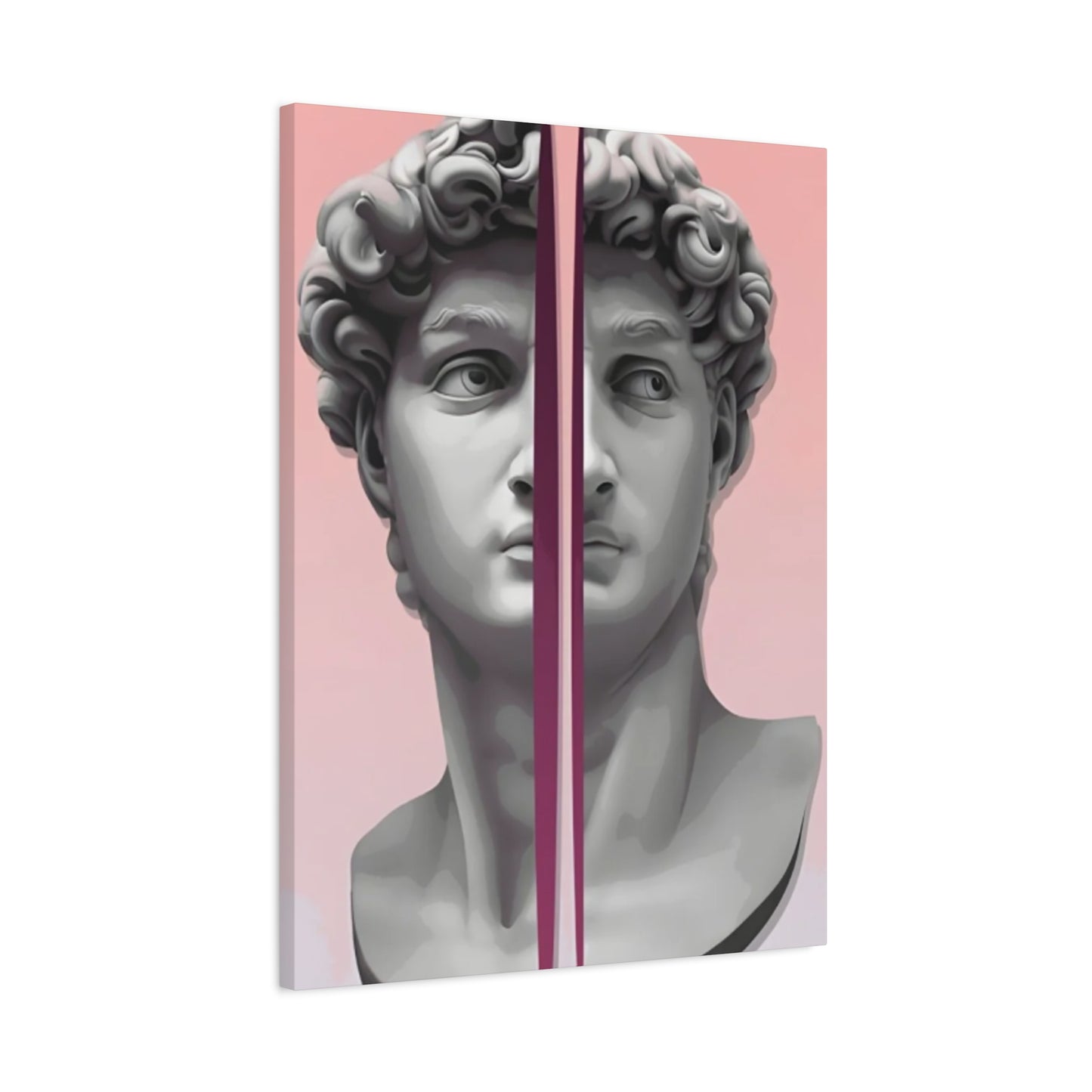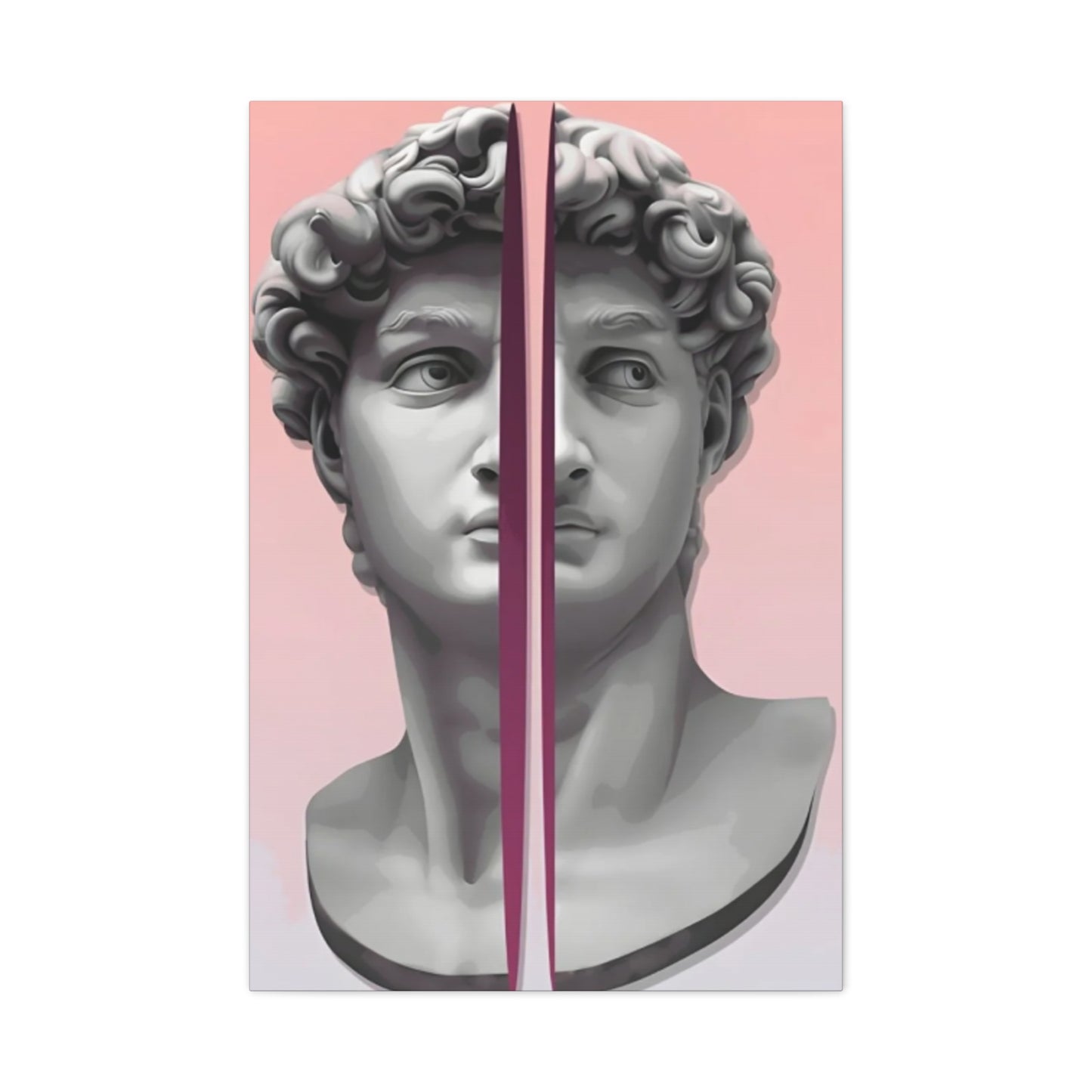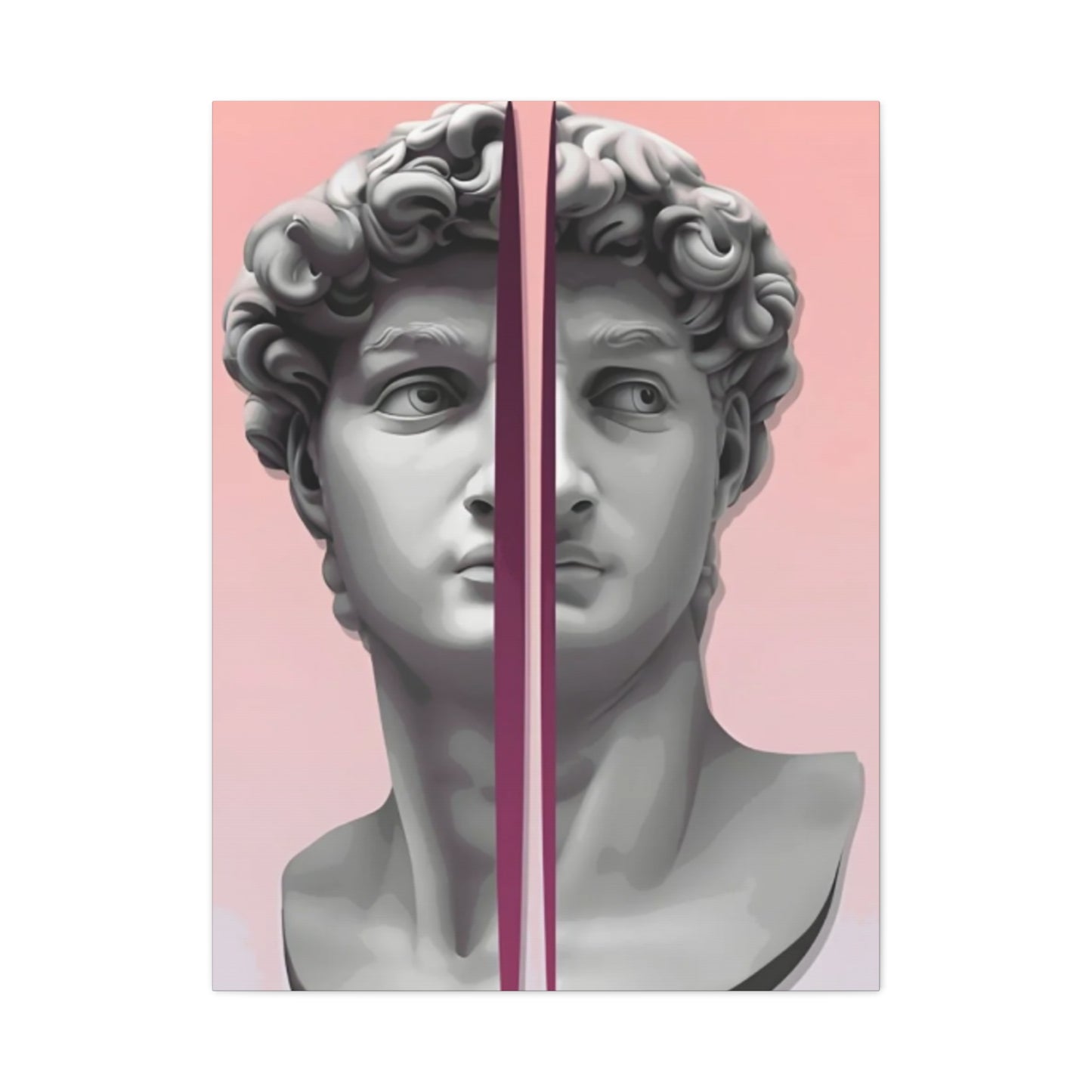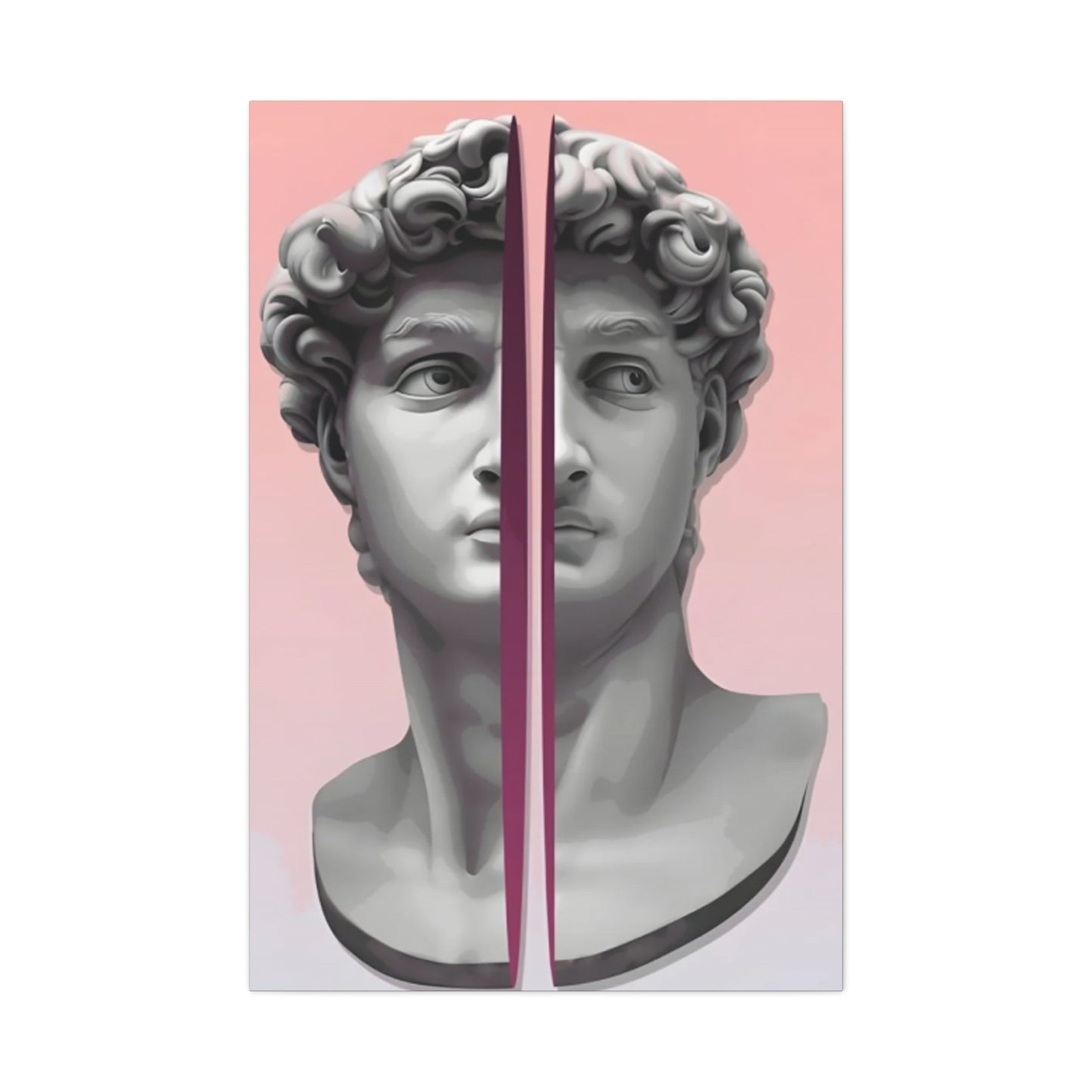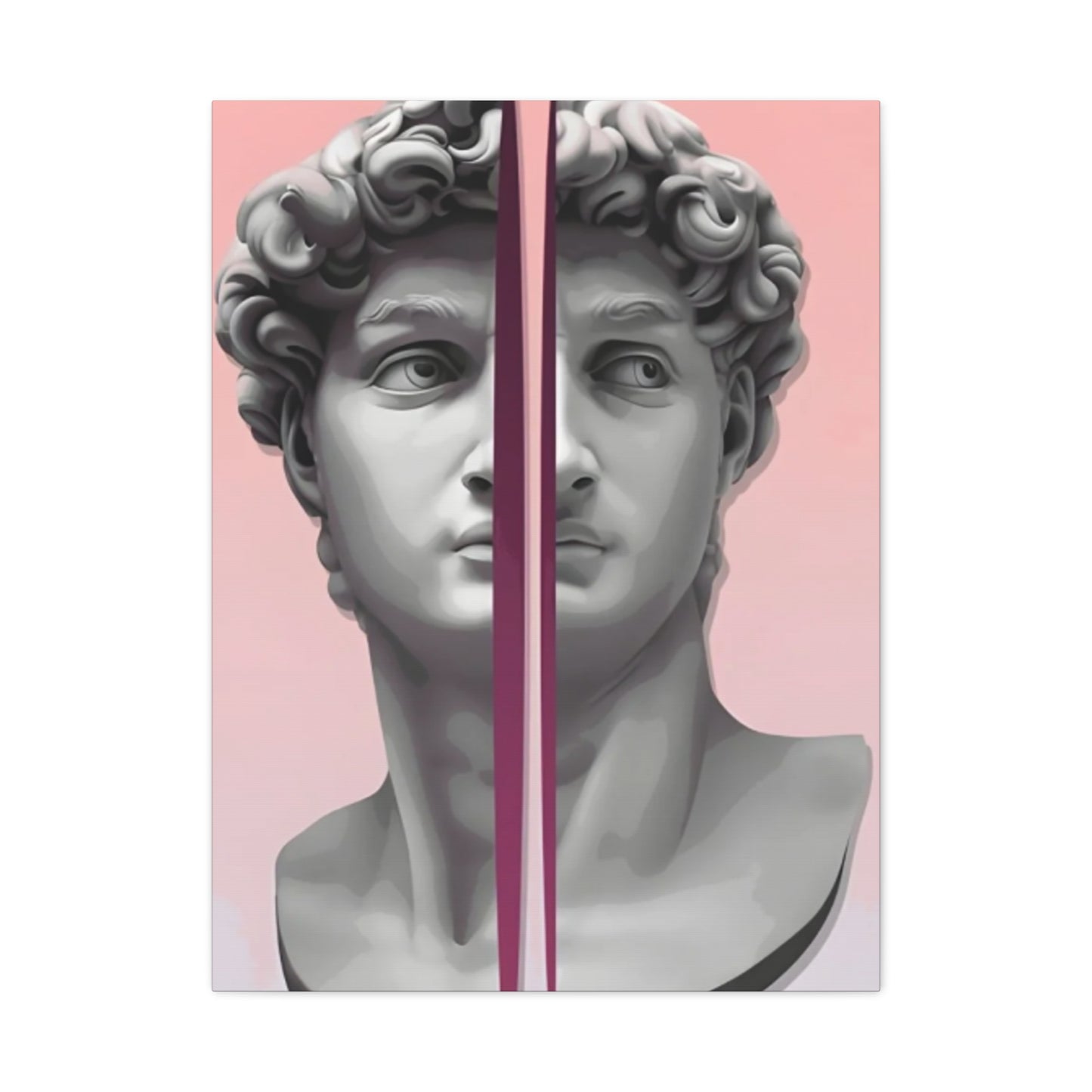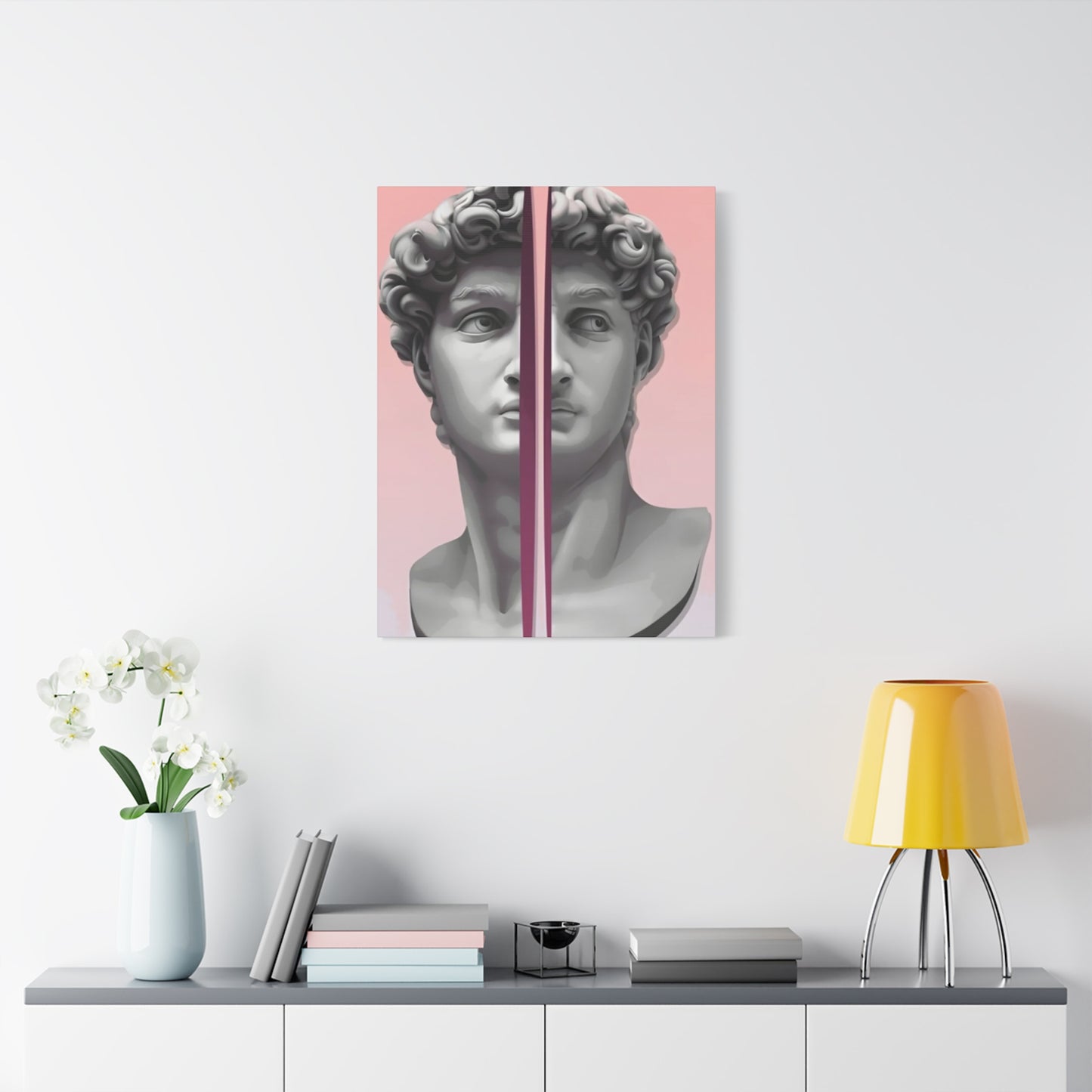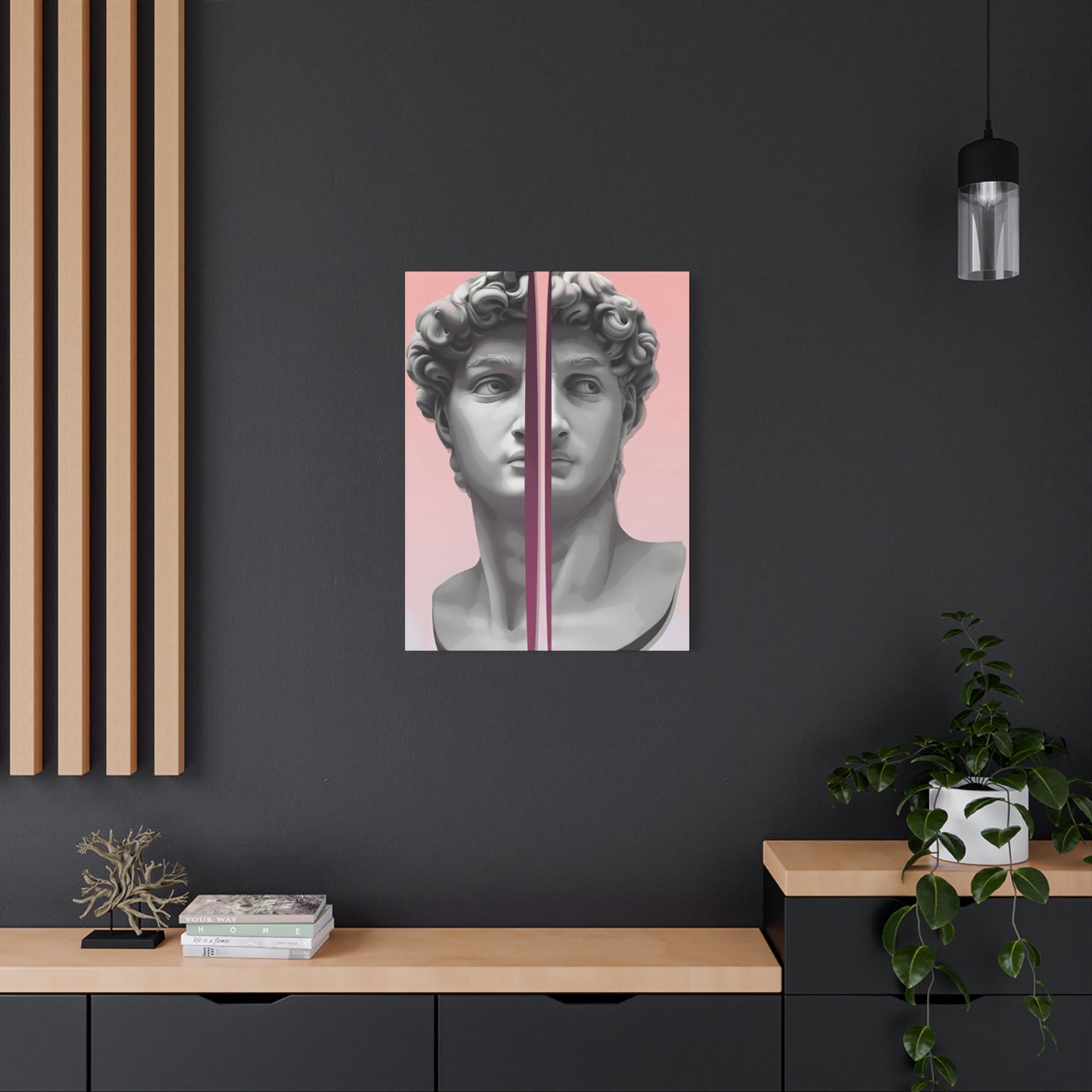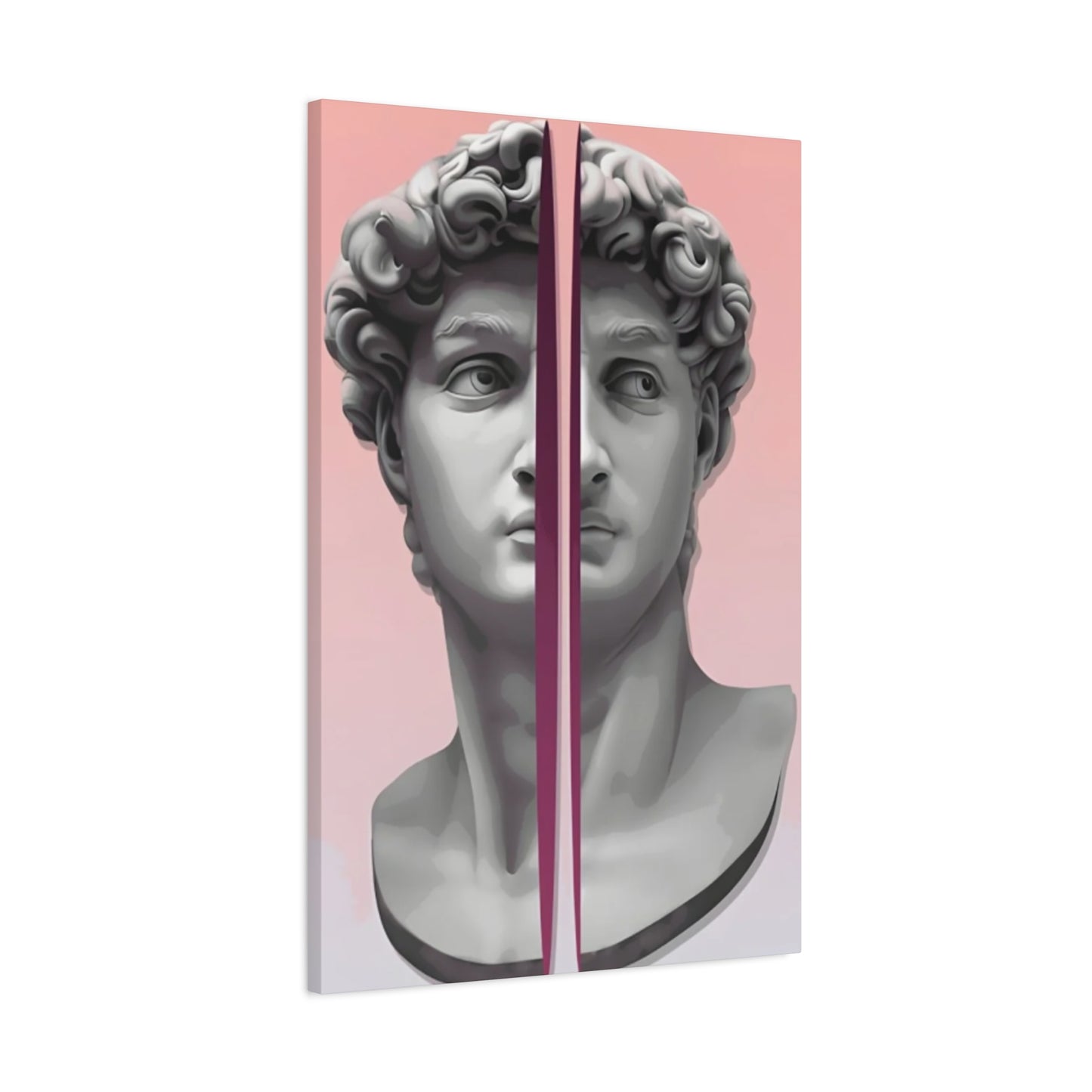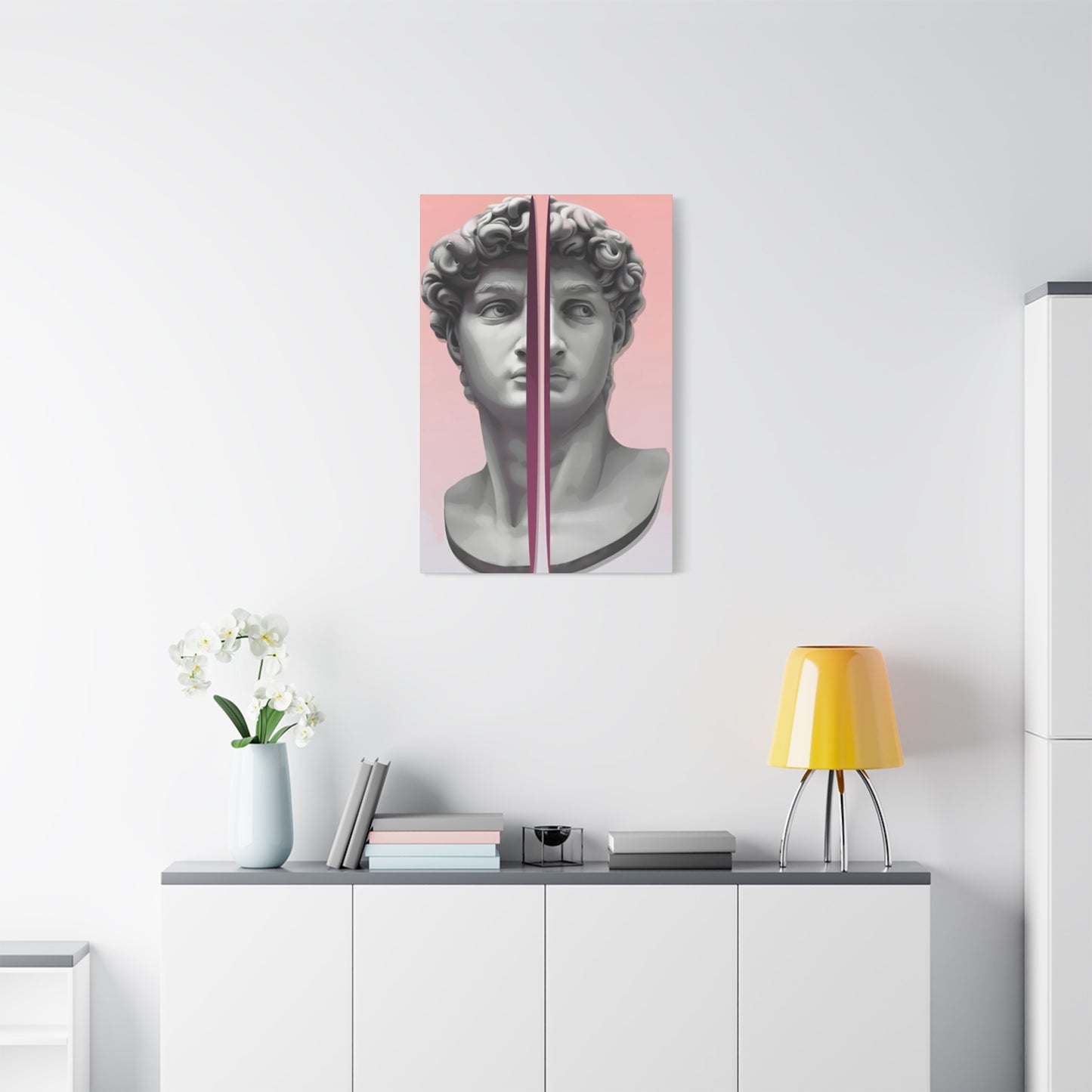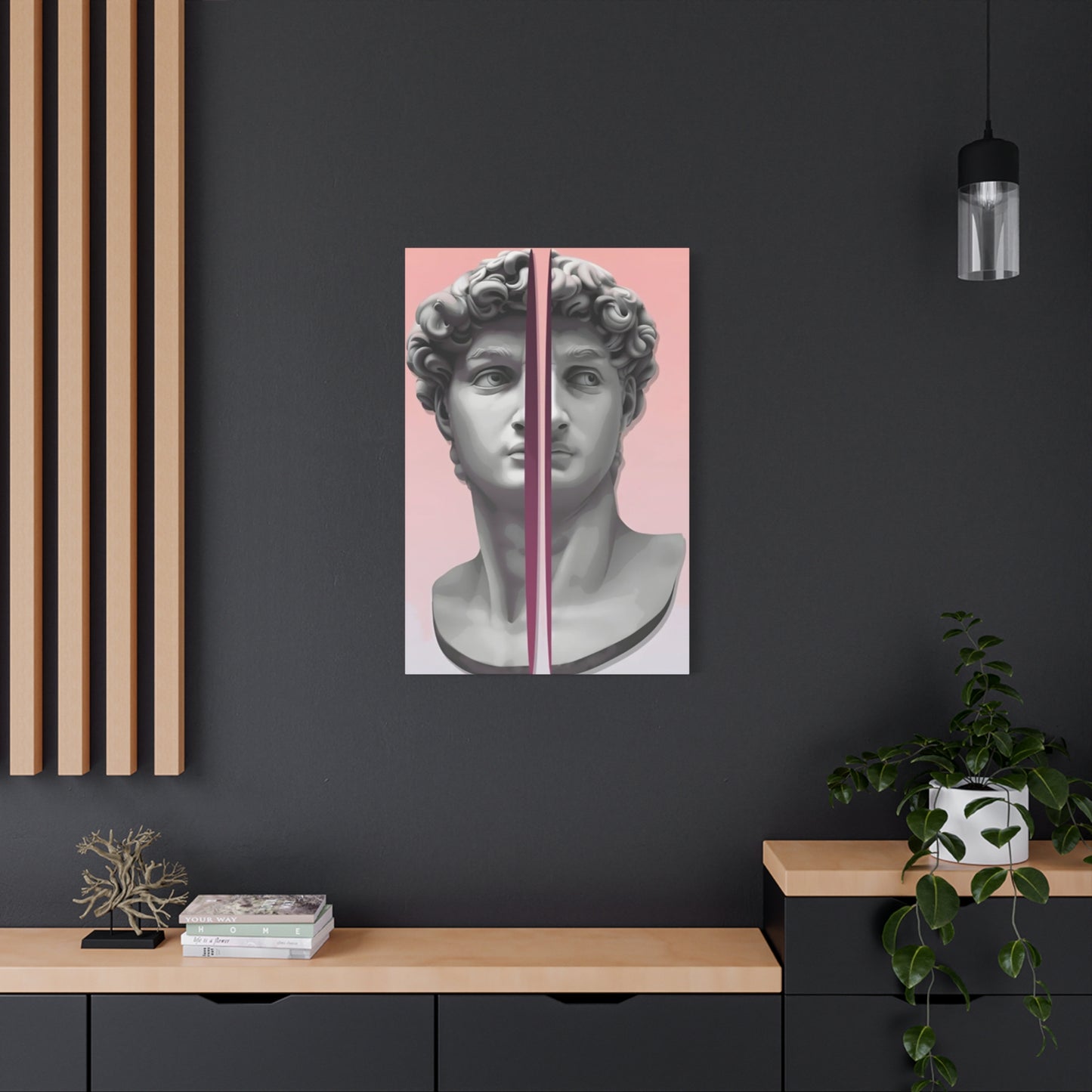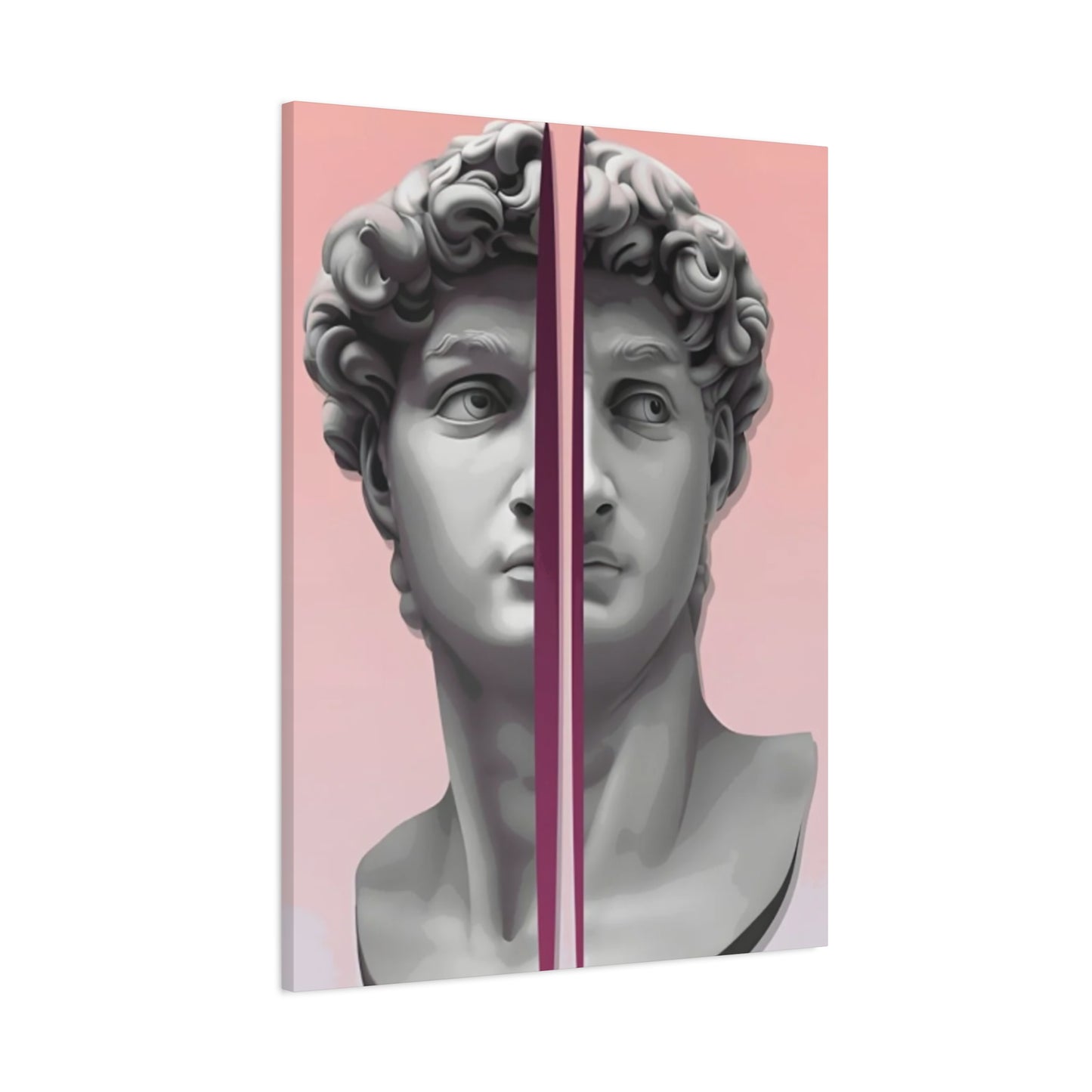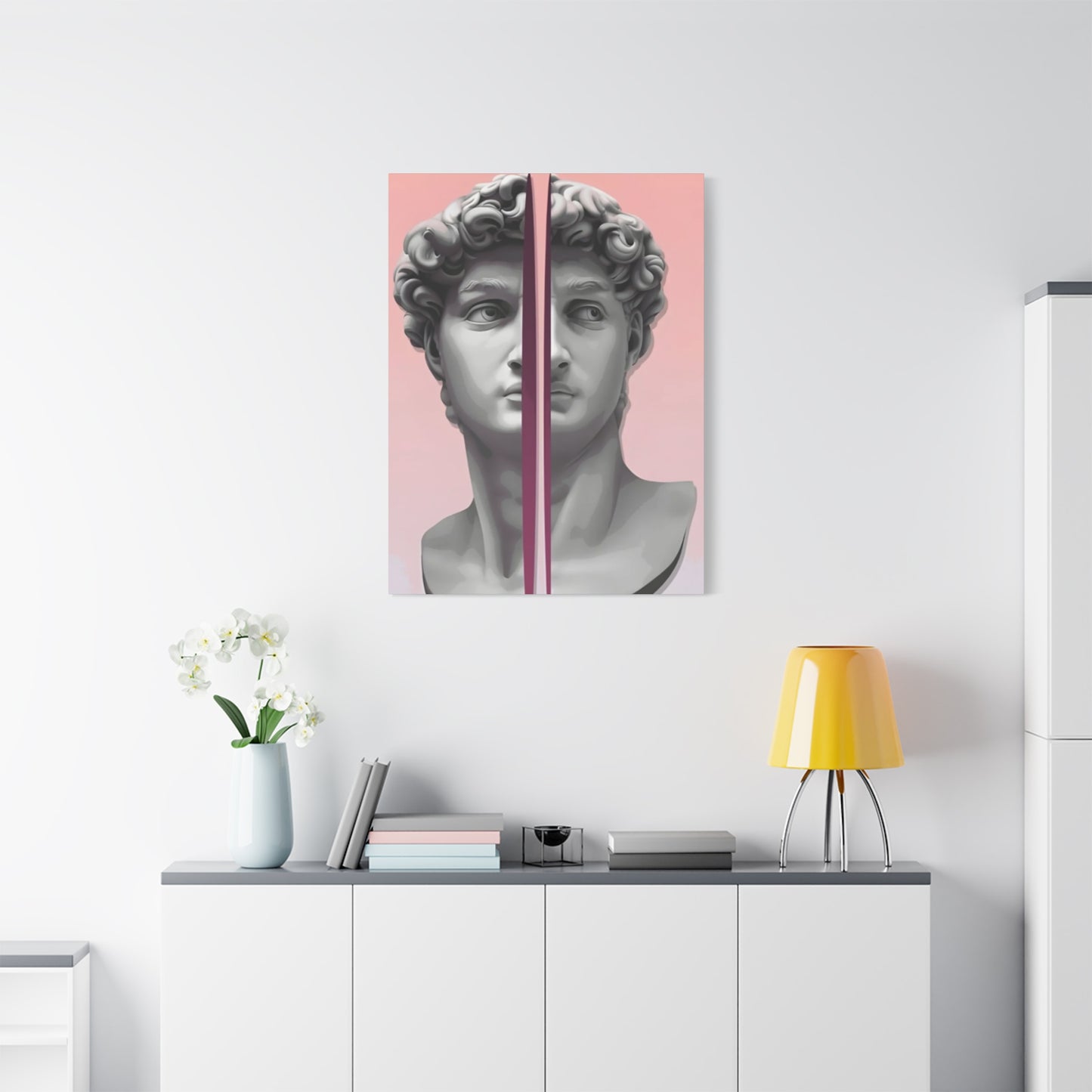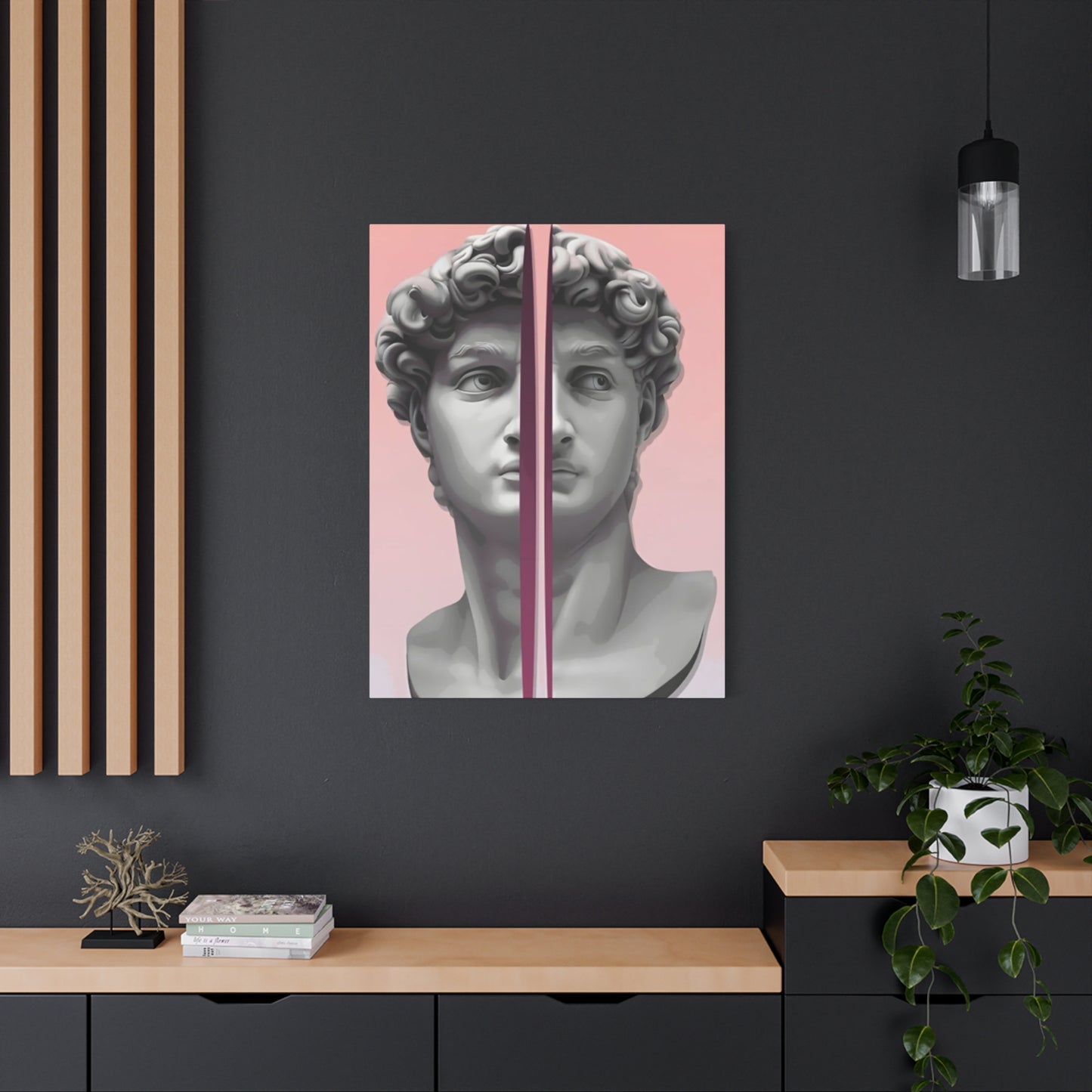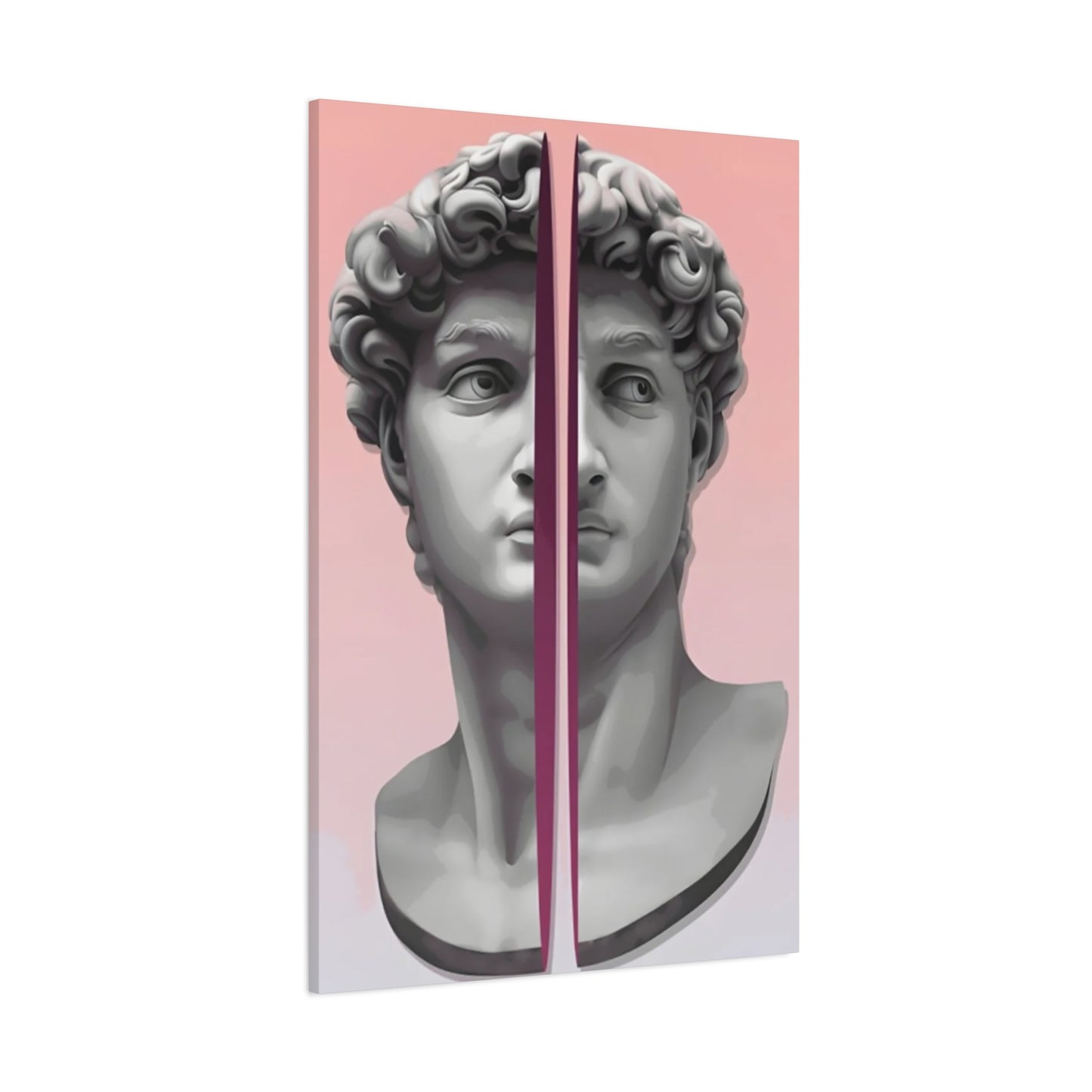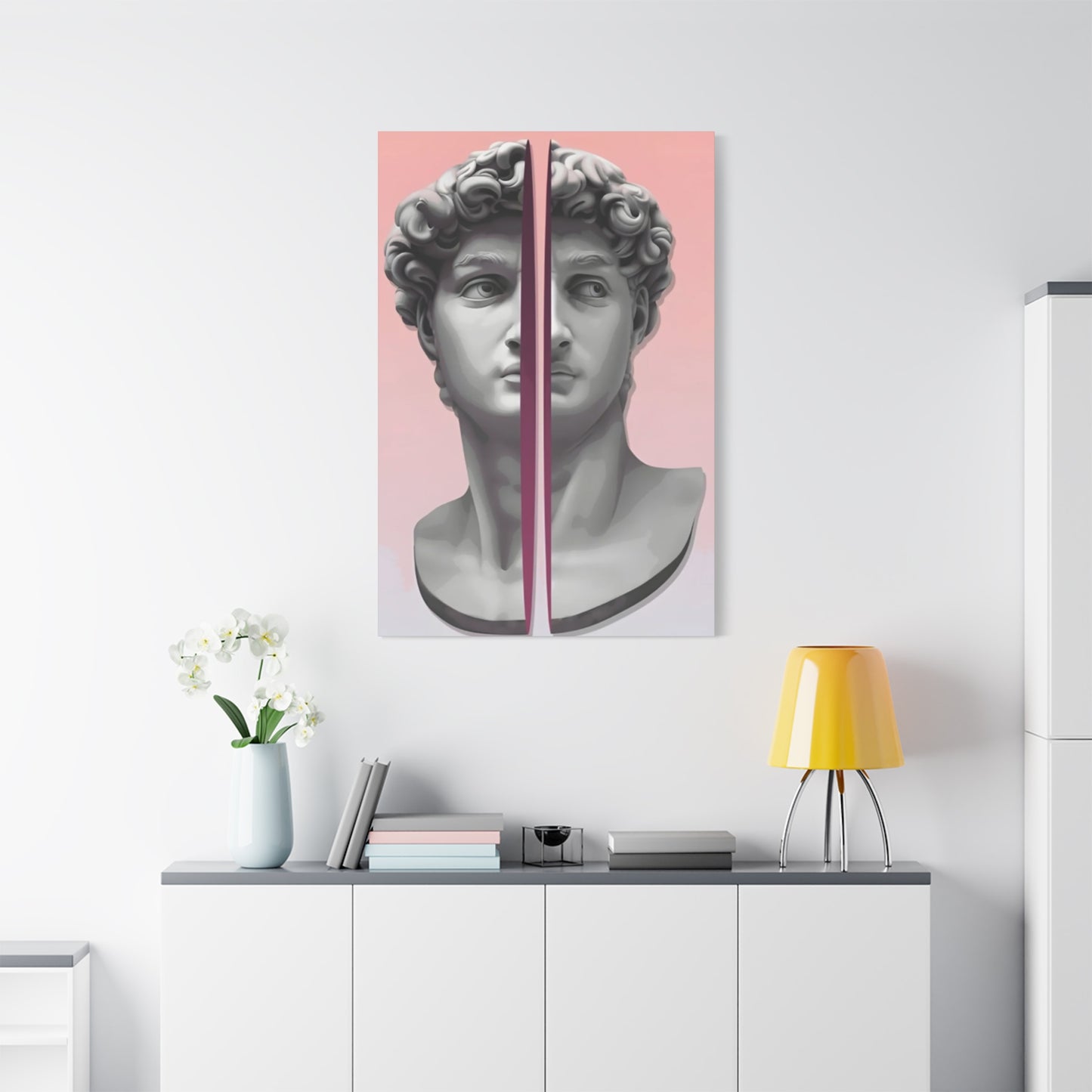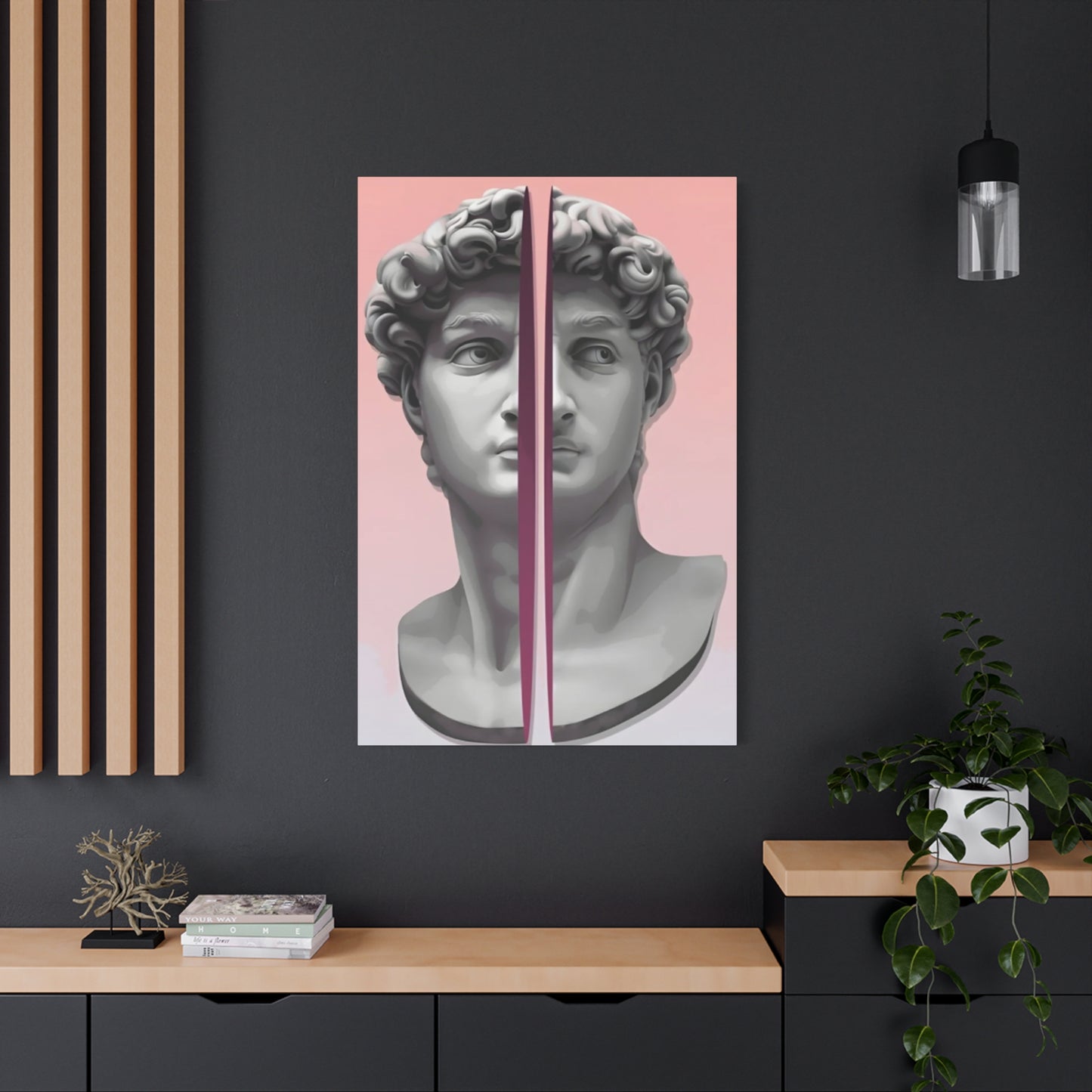Timeless Greece Statue Wall Art: Marble Canvas Prints and Ancient Mythological Decor
The timeless appeal of ancient greece civilization continues to captivate modern audiences through stunning visual representations that bridge classical antiquity with contemporary aesthetics. greece statue wall art has emerged as one of the most sophisticated and culturally rich forms of home decoration, offering homeowners and art enthusiasts an opportunity to incorporate the profound beauty and philosophical depth of ancient Hellenic culture into their living environments. This comprehensive exploration delves into the multifaceted world of greece statue artwork, examining everything from minimalist interpretations to elaborate mythological scenes that transform ordinary rooms into galleries of classical magnificence.
greece statue wall art encompasses a vast spectrum of artistic expressions, from faithful reproductions of world-renowned marble sculptures to contemporary interpretations that reimagine ancient forms through modern artistic lenses. These pieces serve not merely as decorative elements but as windows into a civilization that laid the foundational principles of Western art, philosophy, and democratic ideals. The enduring popularity of greece statue artwork stems from its ability to convey both aesthetic beauty and intellectual substance, making it an ideal choice for individuals who appreciate art that stimulates both visual pleasure and thoughtful contemplation.
The artistic tradition of greece sculpture spans several centuries, beginning with the Archaic period and reaching its zenith during the Classical era, when master sculptors like Phidias, Polykleitos, and Praxiteles created works that continue to influence artistic expression thousands of years later. These original masterpieces, carved from pristine marble and cast in bronze, depicted gods, heroes, athletes, and philosophers with unprecedented realism and emotional depth. Contemporary greece statue wall art draws inspiration from this rich heritage, translating three-dimensional sculptures into two-dimensional canvas prints that preserve the essence and majesty of the originals while making them accessible to modern collectors.
Modern printing technologies have revolutionized the way classical art can be reproduced and displayed, allowing for incredibly detailed and color-accurate representations of ancient sculptures that maintain the subtle nuances of texture, shadow, and form that make greece statuary so compelling. High-resolution digital imaging and advanced printing techniques enable artists and publishers to capture every detail of weathered marble surfaces, the interplay of light and shadow on sculpted forms, and the intricate craftsmanship that characterizes the finest examples of ancient greece artistry.
Minimalist greece Statue Canvas Prints
The minimalist approach to greece statue canvas prints represents a sophisticated fusion of ancient classical forms with contemporary design principles that emphasize simplicity, clean lines, and uncluttered visual presentations. This artistic movement recognizes that the inherent power and beauty of greece sculpture require no additional ornamentation or embellishment to make a profound impact on viewers. Minimalist greece statue prints typically feature single sculptures or small groupings presented against neutral backgrounds, allowing the sculptural forms to command attention through their own inherent majesty and artistic merit.
Contemporary minimalist interpretations often employ monochromatic color schemes, utilizing various shades of white, gray, and black to highlight the sculptural qualities of the original works while creating a sense of timeless elegance that complements modern architectural environments. These pieces work exceptionally well in contemporary homes, offices, and commercial environments where clean aesthetic lines and sophisticated simplicity are valued design principles. The minimalist approach allows viewers to focus entirely on the sculptural elements themselves, appreciating the masterful handling of human anatomy, the subtle expressions captured in marble faces, and the dynamic sense of movement that characterizes the finest examples of greece sculptural art.
Minimalist greece statue prints often feature close-up details of famous works, such as fragments of the Parthenon sculptures, portions of the Venus de Milo, or detailed studies of heads from classical statues that showcase the incredible skill of ancient craftsmen in capturing human emotion and character. These detail-focused approaches create intimate viewing experiences that invite contemplation and closer examination of artistic techniques that have influenced sculptors for millennia. The selective cropping and careful composition of these minimalist interpretations can transform familiar classical images into fresh, contemporary artworks that feel both ancient and thoroughly modern.
The popularity of minimalist greece statue canvas prints also reflects broader cultural trends toward decluttered living environments and the growing appreciation for art that provides visual interest without overwhelming other design elements. These pieces serve as sophisticated focal points that add cultural depth and artistic sophistication to rooms without competing with furniture, architectural features, or other decorative elements. The understated elegance of minimalist greece statue prints makes them versatile enough to complement a wide range of design styles, from ultra-modern minimalist environments to more traditional settings where they can provide a sense of classical gravitas and cultural refinement.
Marble Texture Details in Greece Statue Art
The distinctive texture of marble has been synonymous with greece sculptural artistry for over two millennia, and contemporary Greece statue art celebrates this material relationship through detailed reproductions that emphasize the unique visual and tactile qualities of carved stone. Marble texture details in Greece statue art showcase the remarkable skill of ancient craftsmen who could transform hard, unyielding stone into forms that appeared to possess the softness and warmth of living flesh. These textural elements become particularly important in canvas reproductions, where printing techniques must capture the subtle variations in surface quality that give marble sculptures their distinctive character and visual appeal.
The natural veining patterns found in different types of marble used by greece sculptors create unique visual signatures that add depth and authenticity to statue reproductions. Pentelic marble, quarried from Mount Pentelicus near Athens and used for many of the most famous greece sculptures including those on the Acropolis, possesses a distinctive white color with subtle golden undertones that become more pronounced with age. Parian marble from the greece island of Paros was prized for its exceptional purity and fine grain, making it ideal for detailed work and delicate sculptural features. Contemporary Greece statue art often highlights these material differences, showing how different marble types contributed to the overall aesthetic impact of finished sculptures.
Modern printing technologies excel at reproducing the subtle surface variations that characterize aged marble, including the natural weathering patterns, surface patina, and microscopic textural details that accumulated over centuries of exposure to environmental elements. These weathering patterns often add character and visual interest to reproductions, telling the story of sculptures that have survived wars, natural disasters, and the simple passage of time. The interplay between smooth, polished surfaces and areas where natural erosion has created rougher textures adds visual complexity that keeps viewers engaged and provides opportunities for detailed study and appreciation.
Canvas prints focusing on marble texture details often employ close-up perspectives that allow viewers to appreciate the craftsmanship involved in creating smooth transitions between different surface treatments. greece sculptors were masters of varying surface textures to create visual interest and highlight different aspects of their subjects. Hair might be carved with rough, irregular surfaces to suggest natural texture, while skin areas were polished to mirror-like smoothness to suggest the warmth and suppleness of living flesh. Drapery sections often featured intermediate surface treatments that conveyed the weight and texture of various fabrics, from light linens to heavy woolen garments.
The appreciation of marble texture details in Greece statue art also connects contemporary viewers with the physical reality of ancient artistic creation. Unlike bronze sculptures that were cast in molds, marble works were carved directly from stone blocks, meaning that every surface detail represents hours of careful, skilled labor by master craftsmen working with simple tools. Understanding and appreciating these textural elements helps modern audiences develop deeper connections with ancient artworks and gain greater appreciation for the technical mastery required to create such enduring masterpieces.
greece Gods and Goddesses in Statue Prints
The pantheon of greece gods and goddesses provides an inexhaustible source of inspiration for statue prints that combine artistic beauty with rich mythological narratives and cultural significance. These divine figures, immortalized in marble and bronze by ancient sculptors, continue to fascinate contemporary audiences through their complex personalities, dramatic stories, and the sophisticated artistic traditions that developed around their representation. greece gods and goddesses in statue prints offer viewers opportunities to engage with classical mythology while appreciating some of the finest examples of sculptural artistry ever created.
Zeus, the king of the gods, appears in numerous classical sculptures that emphasize his authority, power, and divine majesty. Statue prints featuring Zeus often showcase the impressive bearded figure with flowing hair and robes, sometimes wielding his characteristic thunderbolt or seated on an elaborate throne that demonstrates his supreme position in the divine hierarchy. The most famous representation, the lost Statue of Zeus at Olympia, was considered one of the Seven Wonders of the Ancient World, and contemporary reproductions based on ancient descriptions and smaller copies help modern audiences imagine the overwhelming impact this colossal work must have had on ancient viewers.
Athena, goddess of wisdom and warfare, presents particularly compelling subject matter for statue prints due to the sophistication and variety of her classical representations. The Athena Parthenos, Phidias's masterwork that stood inside the Parthenon, combined religious devotion with artistic excellence on an unprecedented scale. Smaller-scale reproductions and Roman copies provide source material for contemporary prints that showcase Athena's complex iconography, including her distinctive helmet, shield, and the owl that symbolized wisdom. These elements make Athena statue prints particularly popular with educators, students, and professionals who appreciate the intellectual associations connected with this powerful female deity.
Apollo, god of music, poetry, and the sun, appears in numerous classical sculptures that emphasize his youthful beauty and artistic associations. The Apollo Belvedere, discovered during the Renaissance and long considered the epitome of male beauty in classical art, provides source material for prints that celebrate idealized human form and divine perfection. Apollo statue prints often appeal to music lovers, artists, and individuals who appreciate the connection between classical mythology and creative expression.
Aphrodite, goddess of love and beauty, inspired some of the most celebrated sculptures in classical antiquity, including the Venus de Milo and various other representations that explored themes of feminine beauty, sensuality, and divine grace. Statue prints featuring Aphrodite often focus on the masterful handling of drapery, the subtle modeling of form, and the expressions of serene confidence that characterize the finest representations of this beloved goddess. These works continue to influence contemporary concepts of beauty and provide endless inspiration for artists and art lovers.
The popularity of greece gods and goddesses in statue prints also reflects their continuing relevance to contemporary culture, where these archetypal figures continue to appear in literature, film, and other artistic media. Understanding the visual traditions associated with these deities enriches appreciation of their ongoing cultural influence and provides viewers with deeper connections to the stories and values that shaped Western civilization.
Combining Statues with greece Architecture Art
The integration of sculptural elements with architectural features represents one of the most sophisticated achievements of ancient greece artistic culture, and contemporary art prints that combine statues with greece architecture celebrate this harmonious relationship between different artistic disciplines. greece architects and sculptors worked collaboratively to create unified aesthetic experiences that enhanced both individual elements through their thoughtful integration. This collaborative approach resulted in architectural masterpieces like the Parthenon, where sculptural decorations including pediments, metopes, and friezes worked together with architectural elements to create cohesive artistic statements of unprecedented sophistication and cultural significance.
The relationship between greece statuary and architecture extended far beyond simple decoration, reflecting deep philosophical and aesthetic principles that valued harmony, proportion, and the integration of artistic elements into coherent wholes. greece architects developed mathematical principles and proportional systems that governed not only the relationships between architectural elements but also the scale and placement of sculptural decorations. These principles, codified in treatises like Vitruvius's writings on architecture, established enduring standards for integrating sculptural and architectural elements that continue to influence contemporary design and artistic practice.
Contemporary art prints that combine statues with greece architecture often showcase famous examples like the Erechtheion's Caryatids, where female figures serve as architectural supports while maintaining their identity as independent sculptural works. These remarkable creations demonstrate the greece ability to merge functional and aesthetic considerations, creating architectural elements that perform structural roles while contributing to the overall artistic impact of the building. The Caryatids have inspired countless reproductions and interpretations, appearing in art prints that celebrate both their architectural function and their sculptural beauty.
Temple facades provide particularly rich source material for prints that combine statuary with architectural elements. The triangular pediments of greece temples offered artists opportunities to create complex narrative sculptures that worked within strict architectural constraints while telling complete mythological stories. The Parthenon pediments, depicting the birth of Athena and the contest between Athena and Poseidon for patronage of Athens, demonstrate how sculptural programs could reinforce the religious and civic functions of architectural structures while creating compelling artistic experiences for viewers.
Frieze decorations represent another important category of greece art that seamlessly blended sculptural and architectural elements. The Parthenon frieze, depicting the Panathenaic procession, created a continuous narrative band that encircled the temple while contributing to its architectural character. Contemporary prints featuring frieze elements often focus on the masterful handling of relief sculpture, where figures appear to emerge from architectural backgrounds while maintaining clear relationships with surrounding structural elements.
The study of combined statue and architecture prints also provides insights into ancient greece urban planning and the role of public art in civic life. greece cities featured numerous sculptures placed within architectural contexts, creating environments where art and architecture worked together to educate citizens, commemorate important events, and reinforce cultural values. Understanding these relationships helps contemporary viewers appreciate how ancient greeces integrated artistic expression into all aspects of public and private life, creating environments that were both functional and aesthetically enriching.
Greece Statue Silhouettes on Canvas
The artistic technique of presenting Greece statues as silhouettes creates dramatic visual effects that emphasize form, proportion, and composition while reducing complex three-dimensional sculptures to their essential linear and geometric elements. Silhouette presentations of greece statuary offer unique opportunities to appreciate the masterful understanding of human anatomy and movement that characterizes the finest examples of ancient sculptural art. These simplified representations highlight the strong compositional elements that make greece sculptures instantly recognizable and eternally appealing, demonstrating how ancient artists achieved maximum visual impact through careful attention to overall form and gesture.
Greece statue silhouettes work particularly well as decorative elements because they provide strong graphic impact while maintaining sophisticated artistic content. The reduction of sculptural details to bold, simplified forms makes these pieces suitable for a wide range of decorative contexts, from minimalist modern environments to more traditional settings where they can provide classical references without overwhelming other design elements. The high contrast inherent in silhouette presentations creates striking visual effects that work well with various lighting conditions and color schemes, making them versatile choices for different rooms and decorative approaches.
The creation of effective statue silhouettes requires careful attention to the selection of viewpoints and poses that best communicate the essential character of the original sculptures. Profile views often work particularly well for silhouette treatments, as they can capture the distinctive features and proportions that make individual works recognizable while providing clear, readable forms that translate well to simplified graphic presentations. Famous works like the Venus de Milo, the Discus Thrower, or the Winged Victory of Samothrace possess distinctive silhouettes that remain compelling even when reduced to pure form without surface details or textural elements.
Contemporary artists working with Greece statue silhouettes often experiment with creative presentations that enhance the dramatic impact of these simplified forms. Multiple silhouettes can be arranged in dynamic compositions that create rhythm and movement across canvas surfaces, while variations in scale can create depth and visual interest. Some artists incorporate colored backgrounds or gradient effects that enhance the sculptural qualities of silhouetted forms, creating contemporary interpretations that honor the original sculptures while adding modern aesthetic sensibilities.
The educational value of Greece statue silhouettes should not be underestimated, as these simplified presentations can help viewers develop better understanding of the compositional principles that make greece sculpture so effective. By removing surface details and focusing attention on overall form and proportion, silhouette presentations encourage viewers to analyze how ancient sculptors used gesture, pose, and anatomical relationships to create powerful visual statements. This analytical approach can deepen appreciation for the sophistication of greece sculptural achievement and provide foundations for understanding broader principles of artistic composition and design.
Silhouette presentations also offer opportunities to explore the relationship between positive and negative elements, as the interplay between sculptural forms and background areas becomes particularly important when surface details are eliminated. greece sculptors were masters of creating dynamic relationships between solid forms and the empty areas around them, and silhouette presentations can highlight these spatial relationships in ways that may not be as apparent in more detailed reproductions.
Bronze Statue Art from Ancient Greece
Bronze sculpture represents one of the most technically sophisticated and artistically significant achievements of ancient greece culture, combining advanced metallurgical skills with supreme artistic vision to create works that pushed the boundaries of what was possible in sculptural media. Bronze statue art from ancient Greece showcases the remarkable technical mastery that greece artists achieved in working with this challenging material, which required complex casting processes, careful alloy formulation, and sophisticated finishing techniques to achieve the extraordinary quality evident in surviving examples. The malleability of bronze allowed greece sculptors to achieve effects that were impossible in marble, including complex poses with extended limbs, intricate surface details, and dynamic compositions that conveyed movement and energy with unprecedented convincingness.
The lost-wax casting technique perfected by greece bronze workers enabled the creation of sculptures with hollow interiors, reducing weight while maintaining structural integrity and allowing for more ambitious scales and complex poses. This technical innovation opened new possibilities for sculptural expression, as artists no longer needed to worry about the structural limitations that constrained marble sculpture. Bronze figures could be posed in dynamic action poses, with arms extended or legs positioned in ways that would be impossible to achieve in stone without massive supporting elements that would compromise the artistic effect.
Famous bronze sculptures like the Riace Bronzes, discovered off the coast of southern Italy in 1972, demonstrate the extraordinary quality that greece bronze workers could achieve. These life-size warrior figures showcase the sophisticated understanding of human anatomy, the mastery of surface textures, and the ability to create lifelike expressions that made greece bronze sculpture legendary throughout the ancient world. Contemporary art prints based on these masterpieces allow modern audiences to appreciate details that might be difficult to observe in museum settings, including the intricate work on hair, beards, and drapery that demonstrate the incredible skill of ancient craftsmen.
The Artemision Bronze, depicting either Zeus or Poseidon in the act of hurling a weapon, represents another pinnacle of greece bronze sculpture that continues to inspire contemporary artists and art lovers. The dynamic pose, with arms extended and body twisted in the motion of throwing, demonstrates how bronze sculpture could capture moments of intense action with convincing realism. Art prints featuring this masterpiece often focus on different aspects of the composition, from full-figure presentations that showcase the overall dynamical effect to detail studies that highlight specific technical achievements in modeling and surface treatment.
Bronze statue art from ancient Greece also includes smaller works that were equally sophisticated in their craftsmanship and artistic conception. Statuettes of gods, athletes, and animals demonstrate that greece bronze workers maintained the same high standards regardless of scale, creating miniature masterpieces that exhibit the same attention to anatomical accuracy, surface finish, and artistic expression found in larger works. These smaller pieces often served as votive offerings in temples or as decorative elements in private homes, making high-quality sculptural art accessible to broader segments of ancient society.
The green patina that develops on bronze sculptures over time has become an integral part of their aesthetic appeal, and contemporary art prints often emphasize these color variations that add visual interest and historical authenticity to reproductions. The patina patterns that develop on ancient bronzes tell stories of their survival through centuries of environmental exposure, burial, and recovery, adding layers of meaning that connect contemporary viewers with the long history of these remarkable artworks. Understanding the technical processes involved in bronze casting and patina development enhances appreciation for both the original artistic achievement and the complex historical processes that allowed these masterpieces to survive to the present day.
Statue Art for Contemporary Living Rooms
The integration of statue art into contemporary living room environments requires thoughtful consideration of scale, placement, color relationships, and thematic appropriateness to achieve harmonious results that enhance both the artwork and the surrounding domestic environment. greece statue art possesses inherent qualities that make it particularly suitable for modern residential applications, including timeless aesthetic appeal, cultural sophistication, and the ability to serve as conversation pieces that reflect the intellectual interests and artistic sensibilities of homeowners. When properly selected and positioned, statue art can transform ordinary living rooms into culturally enriched environments that provide daily opportunities for aesthetic contemplation and cultural connection.
Contemporary living room design often emphasizes clean lines, neutral color palettes, and uncluttered visual presentations that provide ideal backdrops for classical statue art. The contrast between ancient sculptural subjects and modern architectural environments creates dynamic tension that enhances both elements, making classical artworks feel fresh and contemporary while adding historical depth and cultural sophistication to modern residential environments. Large-scale statue prints can serve as focal points that anchor room compositions, while smaller pieces can be grouped to create gallery walls that provide ongoing visual interest and opportunities for contemplation.
Color coordination between statue art and living room environments plays a crucial role in achieving successful integration. The predominantly neutral tones found in classical marble sculptures work harmoniously with contemporary color schemes, while the warm tones of aged patina in bronze reproductions can add richness and depth to rooms dominated by cool colors. Monochromatic statue prints in black and white can provide sophisticated graphic impact that complements minimalist design approaches, while color reproductions that emphasize the natural tones of marble and bronze can add warmth and authenticity to more traditional decorative schemes.
Lighting considerations become particularly important when displaying statue art in living room environments, as proper illumination can dramatically enhance the three-dimensional qualities that make sculptural reproductions compelling. Track lighting, picture lights, or strategically placed accent lamps can create dramatic shadows that emphasize the sculptural modeling while adding visual drama to room environments. Natural lighting from windows can also be used effectively, particularly for prints that benefit from changing light conditions throughout the day.
The selection of appropriate statue subjects for living room display requires consideration of the social and cultural functions these rooms serve in contemporary homes. Heroic figures, mythological subjects, and idealized human forms generally work well in social environments where they can serve as conversation starters and reflect the cultural interests of residents. More intimate or contemplative subjects might be better suited to private areas like bedrooms or studies, while dramatic action scenes can add energy and visual excitement to active social environments.
Grouping and arrangement strategies for multiple statue prints require attention to compositional relationships, thematic connections, and visual balance to create cohesive presentations that feel intentional rather than haphazard. Related subjects, such as different views of the same sculpture or various representations of a particular mythological figure, can be grouped to create focused presentations that encourage deeper exploration and understanding. Alternatively, diverse subjects can be arranged according to purely visual criteria, creating compositions that emphasize formal relationships and aesthetic harmony rather than thematic connections.
Framing Tips for Marble Statue Prints
The proper framing of marble statue prints requires careful attention to materials, colors, proportions, and presentation styles that enhance the inherent qualities of classical sculptural reproductions while providing appropriate protection and visual enhancement. Effective framing can transform good reproductions into compelling artistic presentations that honor the dignity and sophistication of original greece sculptures while adapting them successfully to contemporary residential and commercial environments. The frame selection process should consider both aesthetic and practical factors, ensuring that chosen frames complement the artwork while providing appropriate protection from environmental factors that could compromise the longevity and visual impact of high-quality prints.
Traditional framing approaches for marble statue prints often employ neutral colors and classic profiles that avoid competing with the sculptural content while providing elegant presentations that honor the classical heritage of the subject matter. Warm wood tones in oak, walnut, or cherry can provide sophisticated settings that complement the natural tones found in aged marble while adding richness and depth to overall presentations. These traditional materials work particularly well in residential environments where they can integrate harmoniously with furniture and architectural elements while maintaining appropriate formality for classical subject matter.
Contemporary framing approaches may employ more minimalist profiles and materials that emphasize clean lines and unobtrusive presentations. Slim metal frames in silver, gold, or black can provide sophisticated borders that define print boundaries without overwhelming the sculptural content. These modern approaches work particularly well in contemporary architectural environments where traditional wood frames might feel out of place or compete with clean architectural lines and minimalist design principles.
Matting decisions play crucial roles in determining the overall impact and visual relationships within framed presentations. Traditional white or off-white mats provide classic presentations that work well with most marble statue prints, creating neutral borders that separate artwork from frame elements while providing breathing room that prevents compositions from feeling cramped or overwhelming. Colored mats can be used to create specific effects or emphasize particular aspects of prints, but should be selected carefully to avoid creating distracting color relationships that compete with the sculptural content.
The proportional relationships between prints, mats, and frames require careful consideration to achieve balanced presentations that feel appropriately scaled for both the artwork and the intended display environment. Overly large mats can make prints feel lost or insignificant, while inadequate matting can create cramped presentations that fail to provide appropriate visual separation between artwork and frame elements. The width of mat borders should be proportional to both the size of the print and the dimensions of the intended display area.
Glass selection for framing marble statue prints involves balancing protection requirements with visual considerations to achieve optimal presentation results. Regular glass provides basic protection while maintaining clear visibility, but may create reflections that interfere with viewing under certain lighting conditions. Non-reflective glass eliminates reflection problems but may slightly reduce image clarity and color saturation. Museum-quality UV-protective glass provides maximum protection from light damage while maintaining excellent optical clarity, making it an ideal choice for valuable or irreplaceable prints.
Conservation considerations become important for valuable prints or those intended for long-term display in challenging environmental conditions. Acid-free mats and backing materials prevent chemical interactions that could cause discoloration or deterioration over time, while proper sealing and mounting techniques protect prints from humidity fluctuations and atmospheric pollutants that could compromise image quality. Professional framing services specializing in fine art reproduction can provide expert guidance on conservation framing techniques appropriate for specific prints and display environments.
Greece Statue Art Inspired by Mythological Tales
The rich narrative traditions of greece mythology provide inexhaustible inspiration for statue art that combines visual beauty with compelling storytelling, creating artworks that engage viewers on multiple levels through their integration of aesthetic achievement and cultural meaning. Greece statue art inspired by mythological tales transforms ancient stories into visual experiences that make classical literature and cultural traditions accessible to contemporary audiences while celebrating the enduring relevance of archetypal themes and characters that continue to resonate across cultural and temporal boundaries. These mythologically inspired works serve as bridges between ancient and modern cultures, demonstrating how timeless stories can be reinterpreted and represented through various artistic media while maintaining their essential power to inform, inspire, and educate.
The transformation of literary narratives into sculptural representations required ancient artists to master complex compositional challenges, including the need to convey action, emotion, and character relationships through static visual elements. greece sculptors developed sophisticated techniques for suggesting movement, depicting multiple figures in meaningful relationships, and creating compositions that could communicate complex narrative information to viewers familiar with mythological traditions. Contemporary statue art inspired by these works continues this tradition of visual storytelling, often focusing on particularly dramatic or emotionally charged moments that exemplify broader themes and meanings.
The story of Perseus and Medusa has inspired numerous sculptural interpretations that explore themes of heroism, transformation, and the triumph of good over evil. Cellini's famous bronze sculpture of Perseus holding the severed head of Medusa represents one of the most dynamic treatments of this mythological subject, capturing the moment of victory while showcasing the technical mastery required to create convincing representations of both heroic triumph and monstrous defeat. Contemporary prints based on various Perseus sculptures allow viewers to appreciate different artistic approaches to this enduring story while contemplating themes that remain relevant to modern audiences.
The tragic tale of Laocoön and his sons, immortalized in one of the most famous sculptural groups from antiquity, demonstrates how mythological subjects could be used to explore profound themes of fate, divine punishment, and human suffering. The Laocoön Group, discovered in Rome during the Renaissance, depicts the Trojan priest and his sons being attacked by serpents sent by the gods as punishment for warning the Trojans about the wooden horse. The emotional intensity and technical brilliance of this work have made it one of the most studied and reproduced sculptures in Western art, with contemporary prints offering opportunities to examine details and compositional elements that demonstrate the sophistication of ancient narrative sculpture.
Mythological tales featuring the Olympic gods provide source material for statue art that explores themes of power, authority, and divine intervention in human affairs. The story of Zeus overthrowing the Titans, depicted in various relief sculptures and architectural decorations, showcases the greece understanding of cosmic order and the establishment of divine hierarchy. Contemporary reproductions of these narrative sculptures help modern viewers understand how ancient greeces used visual art to communicate complex theological and philosophical concepts while creating compelling artistic experiences that combined religious instruction with aesthetic pleasure.
The adventures of heroes like Hercules, Theseus, and Achilles provided ancient sculptors with opportunities to create works that celebrated human achievement while exploring the complex relationships between mortals and immortals that characterize much of greece mythology. The twelve labors of Hercules, depicted in numerous relief sculptures and individual statuary groups, demonstrate how extended narrative cycles could be broken down into individual scenes that functioned both as independent artworks and as components of larger decorative programs. Contemporary statue art based on these heroic cycles allows modern audiences to engage with classical concepts of virtue, courage, and the struggle between civilization and chaos.
greece Statues and Their Cultural Significance
The cultural significance of greece statues extends far beyond their artistic merit, encompassing their roles as religious objects, civic monuments, educational tools, and symbols of cultural identity that helped define ancient greece civilization and continue to influence Western culture in profound and lasting ways. These sculptural masterpieces served multiple functions in ancient society, from honoring gods and heroes to commemorating important events, celebrating athletic achievements, and providing models of ideal human form and behavior that shaped cultural values and social expectations. Understanding the cultural significance of greece statues enhances appreciation for their artistic achievement while providing insights into the complex social, religious, and political systems that produced and supported some of the greatest artistic achievements in human history.
Religious functions represented perhaps the most important aspect of greece statue significance, as these works served as focal points for worship, devotion, and religious contemplation in temples, sanctuaries, and sacred sites throughout the greece world. Cult statues, particularly large-scale works like the Athena Parthenos or the Zeus at Olympia, were understood not merely as artistic representations but as actual dwelling places for divine presence, making them objects of intense religious significance that attracted pilgrims from throughout the Mediterranean world. The creation of these religious sculptures involved elaborate rituals and ceremonies that emphasized their sacred character, while their maintenance and care became important religious duties that connected communities with their patron deities.
Civic and political significance of greece statues reflected their roles in promoting community identity, commemorating important events, and reinforcing social and political values that helped maintain social cohesion and cultural continuity. Portrait statues of prominent citizens, military commanders, and political leaders served as public monuments that celebrated individual achievement while providing models of civic virtue for future generations. These public sculptures helped create shared cultural memories and reinforced social hierarchies while contributing to the visual character of urban environments that reflected community values and aspirations.
Educational functions of greece statues were particularly important in a culture that valued physical and intellectual development as essential components of human flourishing. Athletic sculptures celebrating Olympic victors and other successful competitors provided visual instruction in ideal physical development while commemorating achievements that brought honor to individuals, families, and home cities. These works helped promote cultural values that emphasized the importance of physical fitness, competitive excellence, and the pursuit of perfection in both athletic and intellectual endeavors.
The influence of greece statue cultural significance on later civilizations demonstrates the enduring power of these works to communicate values, ideals, and aesthetic principles across cultural and temporal boundaries. Roman adoption and adaptation of greece sculptural traditions helped spread greece cultural influence throughout the Mediterranean world and beyond, while Renaissance rediscovery of classical sculptures sparked renewed interest in greece artistic principles that fundamentally transformed European artistic traditions. This continuing influence demonstrates how cultural significance can transcend the original contexts of artistic creation, allowing ancient works to find new meanings and applications in different historical periods.
Contemporary appreciation of greece statue cultural significance often focuses on their roles as representatives of democratic values, intellectual freedom, and artistic excellence that helped establish foundational principles of Western civilization. Modern museums, educational institutions, and cultural organizations use greece sculptures as teaching tools that help contemporary audiences understand the origins and development of cultural traditions that continue to shape modern society. This educational function ensures that the cultural significance of greece statues remains vital and relevant, connecting modern viewers with ancient traditions while providing inspiration for contemporary artistic and cultural expression.
The preservation and protection of greece statues has become an important international concern that reflects recognition of their continuing cultural significance for all humanity. Museums, archaeological institutions, and cultural organizations worldwide work to conserve these irreplaceable artifacts while making them accessible to contemporary audiences through exhibitions, publications, and educational programs that help maintain awareness of their historical importance and continuing relevance.
Creating Contrast with Statue Wall Art
The strategic use of contrast in statue wall art creates dynamic visual effects that enhance both the sculptural reproductions and their surrounding environments through thoughtful manipulation of color, texture, scale, and thematic relationships. Creating effective contrast requires understanding how different visual elements interact with each other and with their architectural contexts to produce compositions that feel balanced, engaging, and aesthetically satisfying. Successful contrast strategies can transform ordinary wall displays into compelling artistic presentations that command attention while contributing to the overall character and atmosphere of residential and commercial environments.
Color contrast represents one of the most immediately noticeable and effective tools for enhancing statue wall art presentations. The predominantly neutral tones of classical marble sculptures create natural opportunities for contrast through the strategic selection of background colors, frame materials, and surrounding decorative elements. Dark backgrounds can make light-colored marble reproductions appear more luminous and three-dimensional, while light backgrounds can create dramatic silhouette effects that emphasize sculptural profiles and overall compositional structures. The selection of contrasting colors should consider both immediate visual impact and long-term viewing comfort, as overly dramatic contrasts may become visually fatiguing over time.
Textural contrast involves the deliberate juxtaposition of different surface qualities to create visual interest and enhance the perceived three-dimensional qualities of flat reproductions. Smooth wall surfaces provide ideal backgrounds for statue art that emphasizes the textural qualities of carved marble or cast bronze, while textured wall treatments can create dynamic relationships that add complexity and depth to overall presentations. The integration of actual textural elements, such as fabric wall coverings or raised plaster details, can enhance the sculptural qualities of reproductions while creating more sophisticated and layered visual experiences.
Scale contrast strategies employ variations in size relationships to create hierarchy, focus attention, and develop visual rhythm within statue art presentations. Large-scale reproductions can be contrasted with smaller companion pieces to create dynamic compositions that guide viewer attention while providing opportunities for detailed study of different aspects of classical sculptural achievement. The careful orchestration of scale relationships requires attention to proportional harmony and visual balance to avoid compositions that feel chaotic or unresolved.
Thematic contrast involves the strategic combination of different subjects, styles, or periods to create intellectually engaging presentations that encourage contemplation and comparison. Classical greece statues might be contrasted with examples from other periods or cultures to highlight distinctive characteristics of greece sculptural achievement, while different representations of the same mythological figure can demonstrate the evolution of artistic interpretations over time. These thematic contrasts can add educational value to decorative presentations while creating more complex and rewarding viewing experiences.
Conclusion
Timeless Greece statue wall art, particularly marble canvas prints and ancient mythological decor, offers a profound way to bring the grandeur and mystique of classical Greece into your home. These artworks capture the elegance of ancient sculptures—whether gods, heroes, or iconic figures from mythology—allowing you to celebrate the rich cultural heritage and artistic mastery of one of history’s most influential civilizations. By incorporating statue-inspired wall art, you create a sophisticated ambiance that honors both history and timeless beauty.
Marble canvas prints, with their striking textures and subtle color palettes, evoke the look and feel of classical Greek sculptures. These pieces provide a tactile sense of antiquity while seamlessly integrating into modern interiors. The interplay of light and shadow on the marble-like surface highlights the intricate craftsmanship of the original statues, making the art both visually captivating and emotionally resonant.
Ancient mythological decor expands on this theme by bringing legendary figures and stories into your living space. From the strength of Hercules to the wisdom of Athena, these artworks serve as powerful symbols that inspire and provoke thought. They offer more than decoration—they invite you to connect with timeless narratives of heroism, morality, and human nature that remain relevant today.
In terms of interior design, Greece statue wall art is remarkably versatile. It pairs well with minimalist and contemporary styles by adding depth and historical context, and it also complements traditional and eclectic decors by enhancing a sense of timelessness and cultural richness. Whether displayed as a focal point in a living room or as a subtle accent in a study, this art form elevates any space with its grandeur and symbolism.
Furthermore, investing in Greece statue wall art supports artists and designers who bring ancient aesthetics into contemporary art forms, preserving the legacy of classical Greece while adapting it for modern appreciation. This fusion of past and present enriches your home with both beauty and meaning.
In conclusion, timeless Greece statue wall art, including marble canvas prints and mythological decor, offers a captivating blend of history, art, and cultural storytelling. It transforms your home into a gallery of classical elegance and enduring inspiration, allowing you to celebrate the grandeur of ancient Greece in a modern context. For those passionate about art, history, or mythology, this style of wall art is a truly timeless and meaningful addition.

















